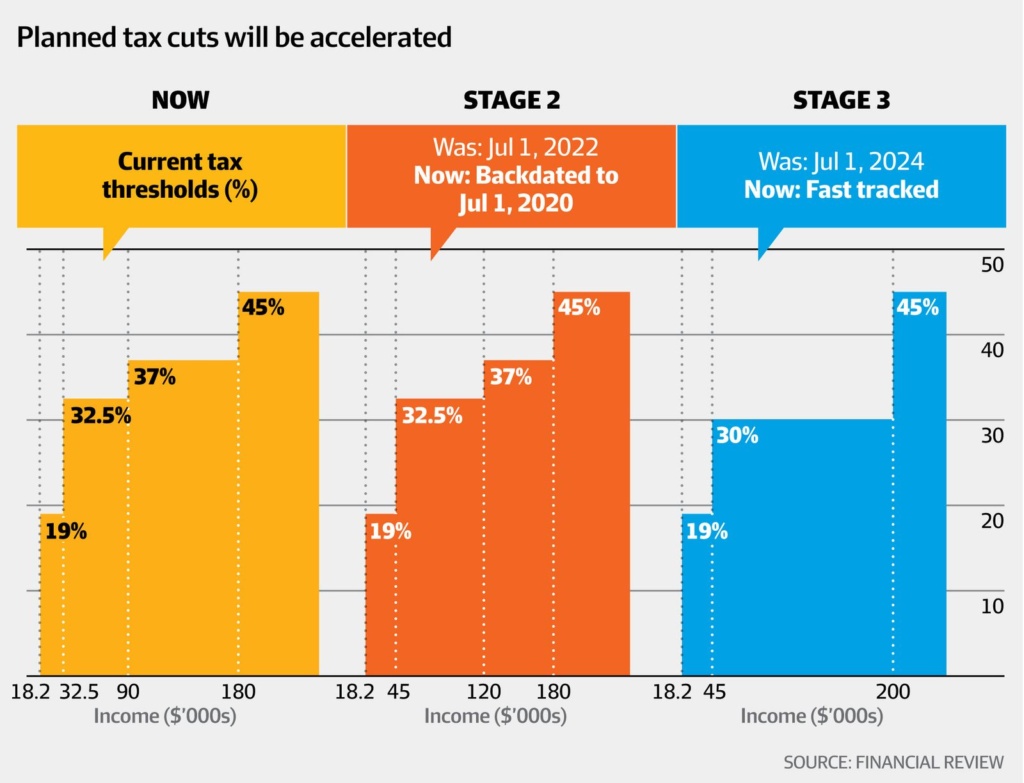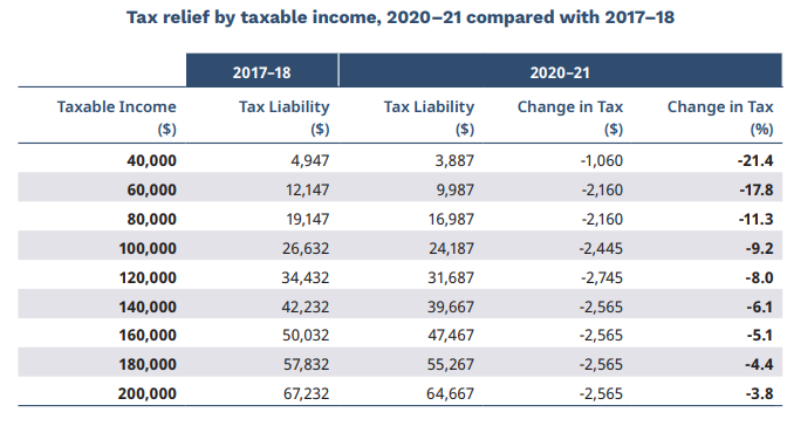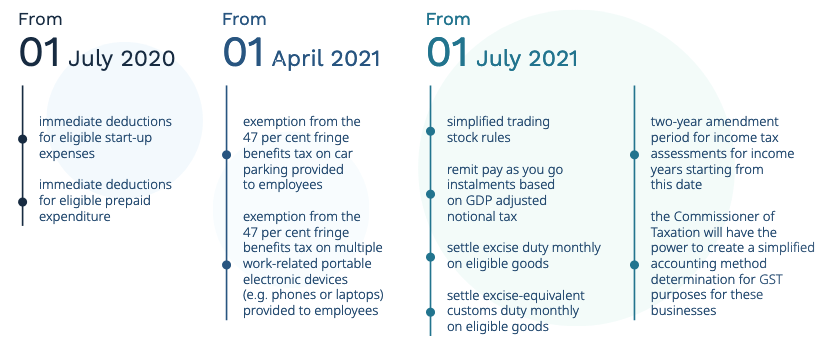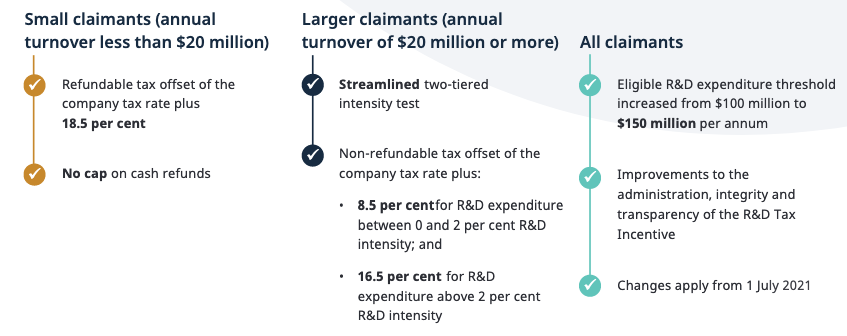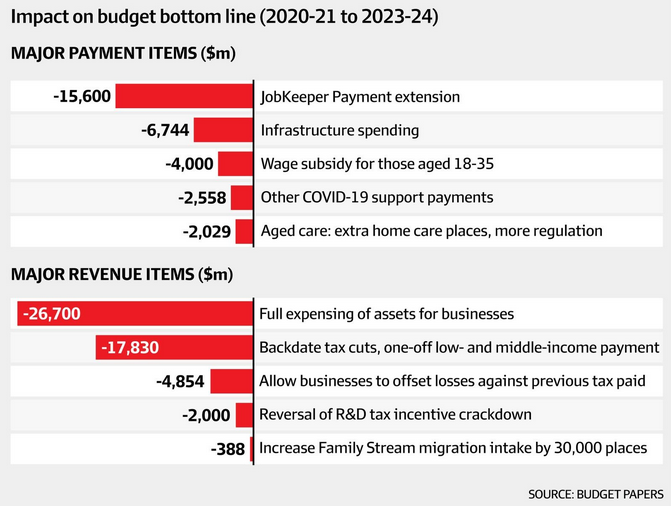Quill is a financial services business with a team of passionate professionals who are committed to working with family businesses, working families and retired families.
Elderly Australians and their families will benefit from a new capital gains tax – CGT exemption for granny flats, under changes to be included in today’s federal budget.
Treasurer Josh Frydenberg and Housing Minister Michael Sukkar have announced plans to either waive or reduce the CGT currently paid on value added to a home by building a granny flat, but only where a formal written agreement is in place between the occupant of the flat and the owner of the main home.
CGT exemption for granny flats
The government expects that about 3.9 million pensioners and 4 million Australians with a disability will become eligible for the new CGT exemption for granny flats.
The rules, which are set to apply from July 1, 2021, and are subject to legislation passing Parliament, will cover agreements entered into because of family relationships or other personal ties. Commercial rental arrangements are excluded.
Does CGT currently apply to granny flats?
Under current tax laws, a homeowner may have to pay CGT where there is an agreement for a family member to reside in their home, such as when an older parent lives with a child, either in the same home or a separate building such as a granny flat.
The tax consequences have been a deterrent to some families establishing a formal and legally enforceable agreement, leaving no protection for the elderly if a relationship breakdown takes place.
Interests in granny flats can affect social security entitlements, so those entering into accommodation arrangements are encouraged to document them fully in writing.
Benefits of the CGT exemption
The budget move is designed to address the tax consequences, which the government believes can be an impediment to families creating formal and legally enforceable granny flat arrangements.
‘‘When faced with a potentially significant CGT liability, families may opt for informal arrangements which can leave open the risk of financial abuse and exploitation, for example following a family or relationship breakdown,’’ Mr Frydenberg said in his press release.
‘‘Under the measure, CGT will not apply to the creation, variation or termination of a formal written granny flat arrangement providing accommodation for older Australians or people with disabilities.’’
It stems from moves to simplify granny flat taxation arrangements, as recommended by a 2019 Board of Taxation report, and amid efforts to end elder abuse and financial crimes targeting older people.
What the experts say
Tax Institute senior advocate Robyn Jacobson said the announcement of the CGT exemption for granny flats was welcome after years of concern and uncertainty for taxpayers.
‘‘It is a shame the changes won’t be given immediate effect from today, as this would provide peace of mind to older Australians and those living with a disability. It would also relieve their adult child of adverse tax consequences,’’ she said.
But Ms Jacobson said only one of two CGT issues was being addressed and she questioned whether the legislation would preserve the main residence exemption in CGT rules. ‘‘One hopes the exemption will be broad enough to cover all of the various arrangements that apply to granny flats because not all are straightforward,’’ she said. ‘‘Some are paid upfront, some are paid over time, some are paid for later once the older parent receives funds such as an inheritance.’’
Tax and Super Australia tax counsel John Jeffreys said the exemption would be popular. ‘‘Granny flats enable a family to care for an older or disabled family members. Yet building this second dwelling usually increases the overall value of the family’s home and … the family then has CGT on this gain if they later sell their home,’’ he said.
CGT exemption for granny flats information
If you need clarification or assistance with the CGT exemption for granny flats, please contact one of our tax accountants.
Quill Group is extremely proud to announce that Rachel Hunter has been has been named as a finalist in the 2020 Women in Finance Awards in the Accountant of the Year category.
The Accountant of the Year award category recognises the accountant who has most effectively shaped their business’s performance and delivered value to their organisation.
About the Women in Finance Awards
The Women in Finance Awards showcases the industry’s most prestigious accolades recognising excellence across the entire financial services industry. The awards pinpoint professional development and innovation, showcasing the female individuals leading the way in the industry.
Award recipients represent a true cross section of the financial services industry, recognising the contributions of the profession’s most senior ranks through to its rising stars.
The finalist list, which was announced over several weeks beginning on 3 August 2020, features over 240 high-achieving professionals across 28 submission-based categories. To be eligible for an awards a nomination must be received, then the individual nominated must complete a detailed submission answering all key criteria items.
“This year’s Women in Finance Awards is our biggest yet, with new categories introduced to capture a wider demographic of outstanding female talent,” said Emma Ryan, deputy head of content at Momentum Media.
“The event represents a fantastic opportunity to shine a spotlight on those going above and beyond for their respective organisations, all while breaking down barriers and cementing themselves as among the top professionals across Australia.”
About Rachel Hunter
For those of you fortunate to have worked with Rachel Hunter, this nomination will come as no surprise. Rachel goes above and beyond for her clients every day and has received an average feedback score of 9.7/10 with feedback like the following coming through regularly:
“I must say the service and communication by Rachel Hunter has been exceptional. We have only been a customer for a little over 12 months but advice Rachel has provided has been treated with the utmost urgency. I feel our business relationship has been very personal in this short time period which I am appreciative of. I would highly recommend Rachel and Quill Group to anyone seeking not only great professional advice but someone who takes a vested interest in your business and it’s success. I truly wish we would have met Rachel years ago.
Thank you Rachel.”
– Chris G. (Business Owner Gold Coast)
Rachel’s Qualifications and Experience
- Position: Relationship Manager / Associate Director
- Current Practice Areas: Tax, Business Consulting
- Qualifications: Bachelor of Business (Accounting) – Griffith University Gold Coast
- Post-Graduate Qualifications: CPA Australia
- Year Entered Industry: 1998
- Personal Mantra: Aim for the stars and if you hit the clouds, you have still reached the sky.
- LinkedIn: linkedin.com/in/rachhunter/
The winners of the awards will be announced via a virtual event on Thursday 10th of September 2020. We wish Rachel all the best!
To speak to Rachel Hunter and learn more about how she and the Quill Group team can assist you and your business, please get in touch.
The Government has passed new laws that will require all current and new company directors will to verify their identity and get a Director Identification Number (DIN) for life under new anti-phoenixing laws. The DIN will act as a unique identifier that will be kept permanently even if the individual ceases to be a director.
“Mega-Registry” to be created for business
The new director identification number system is expected to begin in the first half of 2021, once the application system has been developed and deployed. A “mega-registry” will also be created from 32 different corporate and business registries as part of a program to simplify and streamline business reporting and licensing.
The program will consolidate 31 ASIC business registers including the Companies Register, with approximately 2.6 million registered companies, and the Australian Business Register, with approximately 7.9 million active ABNs.
The Australian Taxation Office will be the operator of the new super registry which will provide a powerful foundation to both manage fraud and to build regulatory functions.
The aim is to also link the new super registry into private business systems to automate compliance and other requirements.
The ATO allows private accounting systems to integrate with its single touch payroll reporting system, creating a powerful platform of services and applications.
The ATO will also manage the administrative data associated with the registries. Near real-time ATO payroll data has been used during the pandemic to better understand the impact of business closures.
The passage of the business registration bill (Treasure Laws Amendment [Registries Modernisation and Other Measures] Bill 2019 through Parliament late last week comes as the Deregulation Task Force reviews electronic communications laws.
The aim is to enable businesses to lawfully transact with government and each other using digital communications and applications, including block chain and other technologies.
Assistant Minister to the Prime Minister Ben Morton is leading the government’s deregulation program.
He announced Treasury will be working with the states to simplify occupational licensing and promote national recognition of qualifications.
“Twenty per cent of workers in the economy are required to be licensed or registered, while there are in excess of 800 licences in manual trades across states and territories,” Mr Morton said.
Transition period for directors to verify for director identification number (DIN)
Under the transition rules for the new director identity system, for the first 12 months of the system new directors will have 28 days to verify themselves and obtain a directors identity number. After that period, new directors will have to have a director identification number before they can be registered.
Current directors are to be given 18 months to verify their identity.
Directors currently do not have to verify identity, leading to many false names being used, such as Elvis Presley, Bob Marley and Homer Simpson.
The new directors identity number (DIN) laws follow a 2015 Productivity Commission report highlighting the practice of phoenixing. The government announced it would roll out the DIN in 2017. Phoenixing is when companies deliberately avoid paying liabilities by shutting down an indebted company and transferring assets to another company.
This hurts trade creditors, employees and the public through lost taxes.According to the explanatory memorandum, phoenixing costs the Australian economy between $2.9 billion and $5.1 billion a year.
The DIN is a unique identifier that a director will keep forever, enabling regulators to better track directors of failed companies who use fictitious identities.
Director Identification Number Frequently Asked Questions (FAQs)
The following are common questions regarding director identification numbers (DIN):
What documents are required when applying for a DIN number?
Although not specifically mentioned in the Explanatory Memorandum, it’s likely that the document requirements will be similar to that of the existing and commonly used 100 point identification system, where primary and secondary documents such as driver’s licence, passport, birth certificate and medicare card are used to verify a directors identity.
It’s also possibly the Registrar will leverage the existing myGovID system to in regards of the documents required for a new or existing director to obtain a director identification number.
How can you apply for a Director Identification Number (DIN) online?
At this stage it’s unknown how the application process will work for a DIN, however it will likely be online either via MyGov and will likely leverage the existing MyGovID system.
More detailed questions and answers will be available when the new registration system for DINs is up and running. If you have any specific questions on how the director identification number system may impact you, please contact us.
Quill Group is extremely proud to announce that Rachel Hunter has been has been named as a finalist in the 2020 Australian Accounting Awards in the Public Accountant category.
The Australian Accounting Awards showcase the industry’s most prestigious accolades recognising excellence across the entire accounting industry. The awards pinpoint professional development and innovation, showcasing both the individuals and firms which are leading the way in the industry.
Award recipients represent a true cross section of the accounting industry, recognising the contributions of the profession’s most senior ranks through to its rising stars.
According to Accountants Daily, this year’s finalists for the Public Accountant of the Year have demonstrated an outstanding approach to tax and compliance, while working towards the financial and lifestyle goals of their clients. These finalists were commended for their ongoing education and training to deliver the best services for their client base.
For those of you fortunate to have worked with Rachel Hunter, this nomination will come as no surprise. Rachel goes above and beyond for her clients every day and has received an average feedback score of 9.5/10 with feedback like the following coming through regularly:
“I must say the service and communication by Rachel Hunter has been exceptional. We have only been a customer for a little over 12 months but advice Rachel has provided has been treated with the utmost urgency. I feel our business relationship has been very personal in this short time period which I am appreciative of. I would highly recommend Rachel and Quill Group to anyone seeking not only great professional advice but someone who takes a vested interest in your business and it’s success. I truly wish we would have met Rachel years ago.
Thank you Rachel.”
– Chris G. (Business Owner Gold Coast)
More About Rachel Hunter
- Position: Relationship Manager / Associate Director
- Current Practice Areas: Tax, Business Consulting
- Qualifications: Bachelor of Business (Accounting) – Griffith University Gold Coast
- Post-Graduate Qualifications: CPA Australia
- Year Entered Industry: 1998
- Personal Mantra: Aim for the stars and if you hit the clouds, you have still reached the sky.
- LinkedIn: linkedin.com/in/rachhunter/
The winners of the awards will be announced via a live broadcast on Friday the 19th of June. We wish Rachel all the best!
To speak to Rachel Hunter and learn more about how she and the Quill Group team can assist you and your business, please get in touch.
The laws setting out the Federal Government’s response to Coronavirus were introduced into Parliament on 23 March 2020, the bill has now been passed by both just awaiting royal assent, with one measure being the cash flow boost for eligible employers who may receive up to $100,000 tax-free.
Am I eligible for the cash flow boost?
A business (including a charity or not-for-profit) will be eligible for the cash flow boost if it meets the following conditions.
- The business must make a payment that is subject to the withholding tax provisions – the most common example will be payments of salary or wages.
- The business must be one of the following:
(a) a small business entity – which generally means carrying on business in the relevant income year and with an aggregated turnover of less than $10 million
(b) a medium business entity – which generally means carrying on business in the relevant income year and with aggregated turnover of less than $50 million
(c) a charity or other not-for-profit entity of an equivalent size. The legislation tests turnover for the most recent income year that the business has received an income tax notice of assessment.
If this is not possible, which may be relevant for charities and other entities that are exempt from income tax, the alternative is for the Commissioner to be satisfied that there is a reasonable possibility the business will meet the criteria for the relevant income year (either the 2020 income year or the 2021 income year). - The business must have notified the Commissioner of the payment that was subject to withholding tax in the approved form. This will usually be done by lodging the relevant Business Activity Statement (BAS).
- The payment must relate to either:
(a) for monthly withholders – the months of March 2020, April 2020, May 2020 or June 2020
(b) for quarterly withholders – the quarters ending March 2020 or June 2020. - The business must have held an ABN on 12 March 2020. This is not relevant for charities.
- The business must have either:
(a) derived assessable income from carrying on a business in the 2019 income year
(b) made supplies in the course of carrying on its enterprise within Australia after 1 July 2018 and before 12 March 2020.
What if the business has not historically paid salary or wages?
We have received good questions about helping clients access the boosts – in some cases where the client has not made payments subject to withholding. This may be because the owners have historically taken dividends or drawings.
The legislation contains integrity rules that prevent businesses from trying to manoeuvre into the eligibility conditions.
One condition for getting the boosts is that the client (and their agents and associates) did not enter into an arrangement for the sole or dominant purpose of getting the boosts, or getting increased boosts.
We will update this article if we receive any guidance as to whether switching from drawings/ dividends to salary, for example, when all of the other conditions are satisfied, will trigger the anti-avoidance provisions.
What do I have to do to get the cash flow boost?
Businesses will need to lodge their BASs showing the payments that are subject to withholding.
If the business is a charity or not-for-profit with no income tax notices of assessment, it will need to notify the Commissioner that it should satisfy the small to medium business entity requirement.
How much are the cash flow boosts?
There are two cash flow boosts. The minimum amount for each cash flow boost is $10,000 – so $20,000 in total. The maximum cap for each cash flow boost is $50,000 – so $100,000 in total.
Subject to the minimum amount and maximum cap, the cash flow boost is 100% of the amount that has been withheld for the period.
However, if the payment is for the month (not quarter) of March 2020, the cash flow boost is 300% of the amount that has been withheld. This means there is no difference between monthly and quarterly reporting.
How do I get the first cash flow boost?
The tax-free payment will broadly be calculated and paid by the ATO as an automatic credit to an employer, upon the lodgment of activity statements from 28 April 2020, with any resulting refund being paid to the employer. This means that:
- – quarterly lodgers will be eligible to receive the payment for the quarters ending March 2020 and June 2020; and
- – monthly lodgers will be eligible to receive the payment for the March 2020, April 2020, May 2020 and June 2020 lodgments. However, the payment for the March 2020 activity statement will be calculated as being three times the actual amount withheld.
Note that, the minimum payment of $10,000 will be applied to an entity’s first activity statement lodgment (whether for the month of March or the March quarter) from 28 April 2020.
How do I get the second cash flow boost?
The second cash flow boost is the same amount as the first cash flow boost. There are further eligibility conditions, but most will be satisfied if the business remains in business.
For employers that continue to be active, an additional (tax-free) payment will be available in respect of the June to October 2020 period, basically as follows:
- – Quarterly lodgers will be eligible to receive the additional payment for the quarters ending June 2020 and September 2020, with each payment being equal to 50% of their total initial (or Stage 1) payment (up to a maximum of $50,000).
- – Monthly lodgers will be eligible to receive the additional payment for the June 2020, July 2020, August 2020 and September 2020 activity statement lodgements, with each additional payment being equal to a 25% of their total initial (or Stage 1) payment (up to a maximum of $50,000).
The ATO will automatically calculate and pay the additional (tax-free) payment as a credit to an employer upon the lodgement of their activity statements from July 2020, with any resulting refund being paid to the employer.
If you have any questions, please contact a member of our team to discuss.
See more on the ATO Website here regarding boosting cash flow for businesses.
See the latest updates on COVID-19 and how it may affect you here.

